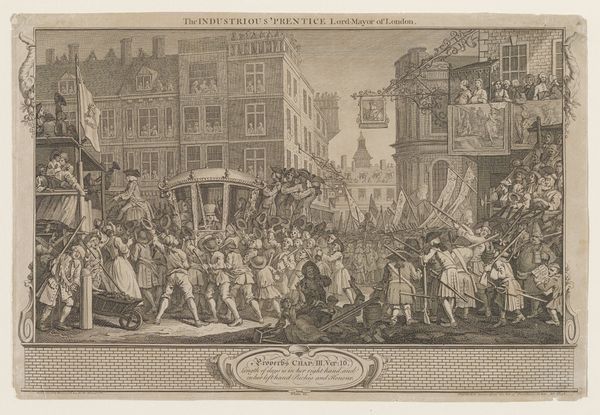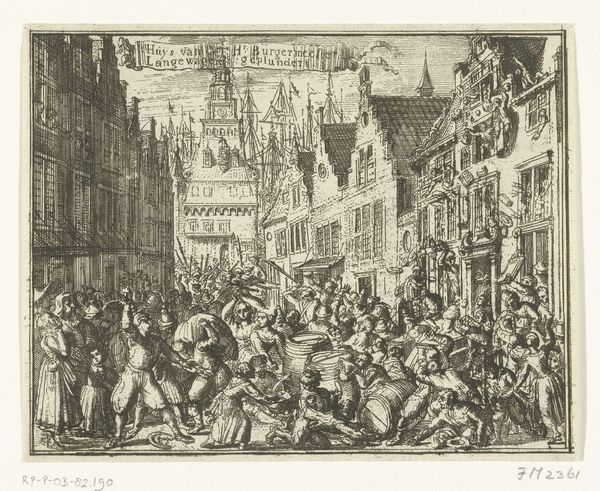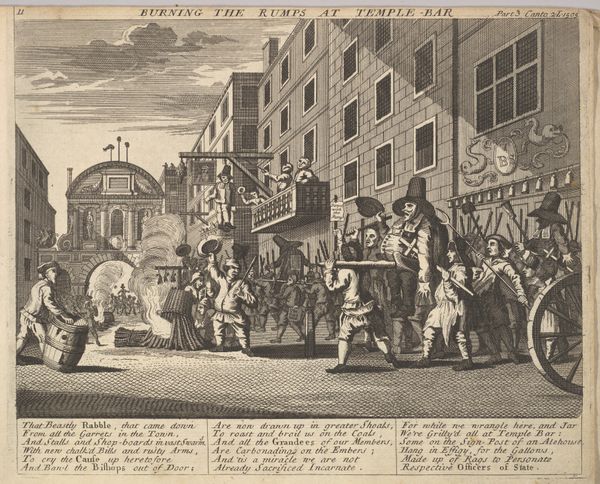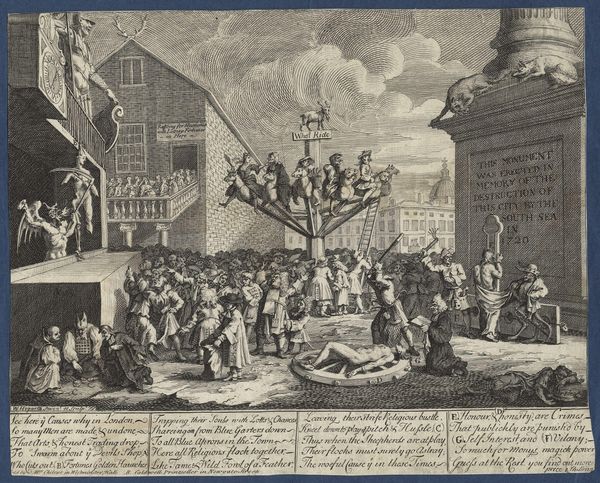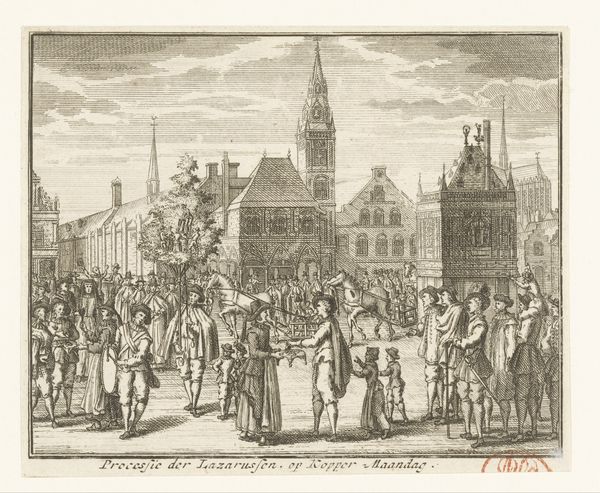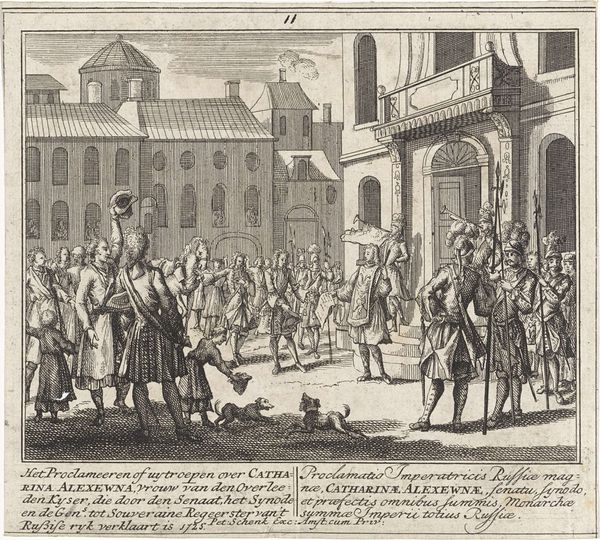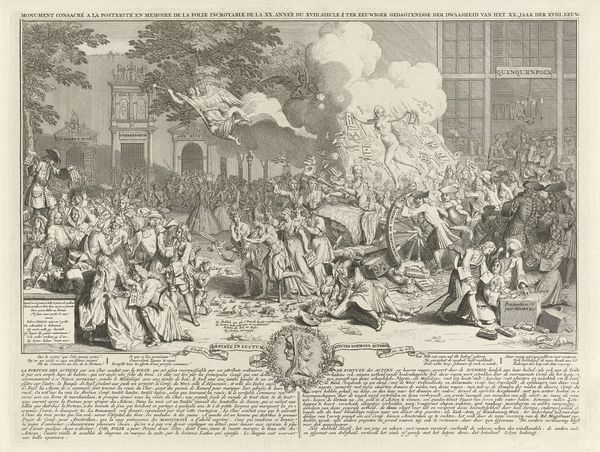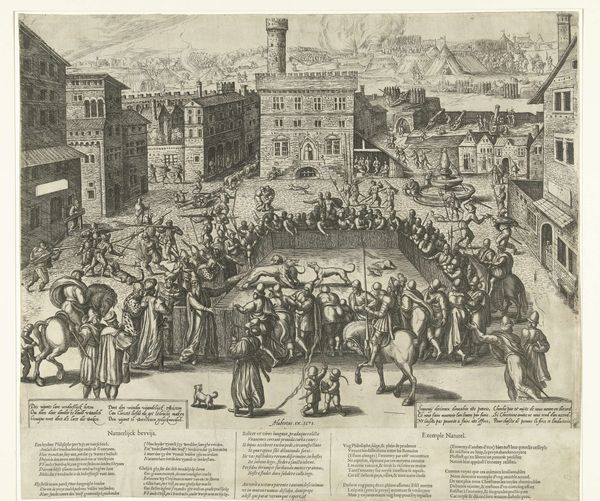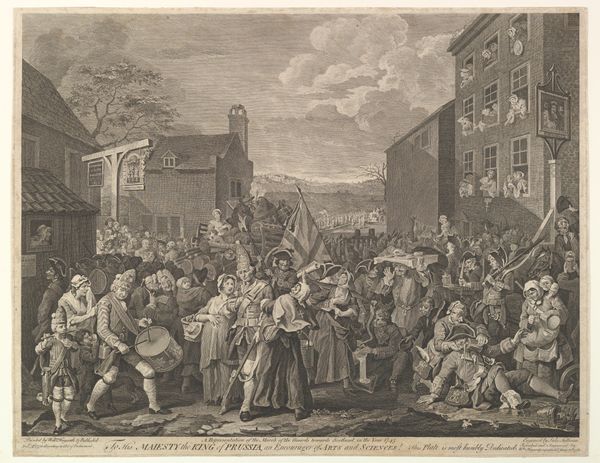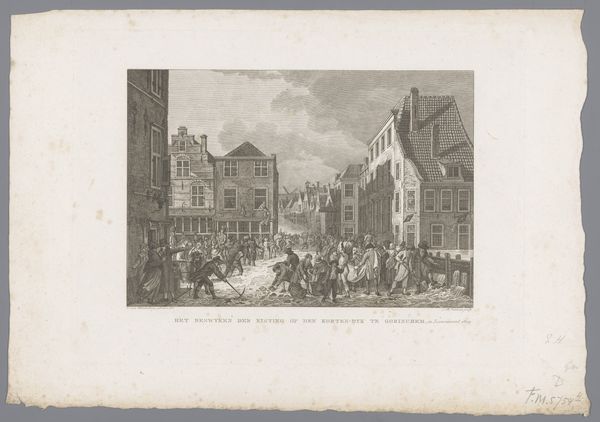
The Industrious 'Prentice Lord Mayor of London: Industry and Idleness, plate 12 1747
0:00
0:00
drawing, print, engraving
#
drawing
#
baroque
# print
#
figuration
#
cityscape
#
genre-painting
#
history-painting
#
engraving
#
building
Dimensions: sheet: 10 9/16 x 15 13/16 in. (26.9 x 40.2 cm)
Copyright: Public Domain
Curator: Here we have "The Industrious 'Prentice Lord Mayor of London: Industry and Idleness, plate 12," an engraving created by William Hogarth in 1747. It's currently held in the collection of the Metropolitan Museum of Art. Editor: It strikes me immediately as overwhelmingly busy! So much detail packed into one scene. The composition leads my eye from the crowd in the foreground toward those grand buildings in the back. Curator: Precisely. Hogarth uses such vibrant, populous scenes to comment on the social landscape of his time. These prints, intended for a wide audience, became potent tools for shaping public morality and attitudes towards class and civic virtue. Editor: I'm fascinated by the texture created by the engraving technique. The fine lines delineate all this chaotic action and various social actors. You can feel the layers of meaning embedded within Hogarth’s rendering process. He’s using material to speak directly to class consciousness. Curator: Absolutely. Notice how he uses this narrative to celebrate the Protestant work ethic and the possibility of social mobility through hard work and diligence? It also reflects the political climate of 18th-century London. Civic festivals were heavily invested in and funded through the Lord Mayor. Editor: So, the production process isn’t separate from the political and economic ideologies embedded in the images themselves. It also demonstrates his acute attention to the lived realities of everyday Londoners: their trades, their costumes, the architectural features… Curator: And importantly, we have to acknowledge his critique of the alternative path of idleness and its consequences in society. He offers very clear social commentaries. Editor: But, even if Hogarth seems like he is celebrating labor, we should be critical. Look at how that work is rendered as this spectacular public performance to honor powerful elites, or justify social stratifications. Curator: That’s a sharp observation. The artwork clearly serves both to celebrate a social ideal but also subtly, but definitely reinforces a stratified social hierarchy. Editor: So, from the details etched into the metal plate to the public display of civic pride, every layer screams about labor, power, and the social order. Curator: This piece prompts us to examine the narratives art perpetuates about industry, success, and societal expectations. Editor: It challenges us to interrogate whose labor gets celebrated, and to what end.
Comments
No comments
Be the first to comment and join the conversation on the ultimate creative platform.
